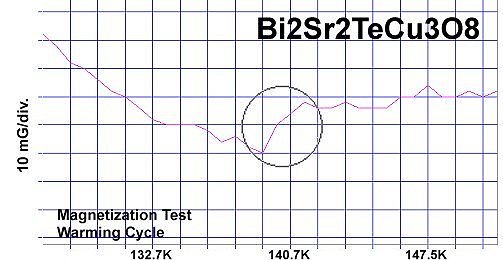
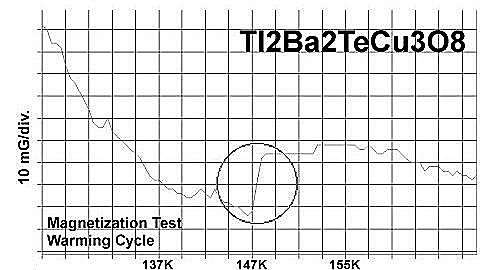


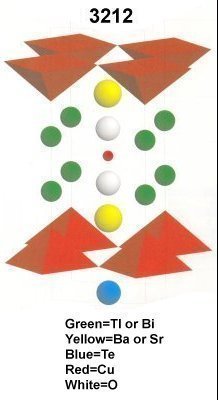
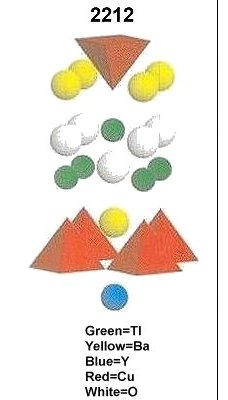
|
The magnetization plots at page top show a Meissner transition for Bi-3212-Te around 139K in the upper left. Then, in the upper right, Tl-3212-Te transitions near 147K. Both are multiphasic due to Bi(III) and Tl(III) going into other atomic sites and forming a 2212 structure. Even so,
the 147 K material establishes a new record for being the highest Tc superconductor that will form with a high volume fraction through the stoichiometric mixing of chemicals.
Meanwhile, the below plots result from yttrium being substituted into the calcium site of Tl-2212. The below left plot shows a sharp diamagnetic transition of around 30 milligauss near 139K. And the below right plot shows about a 2% resistance drop - also near 139K. The straight lines drawn through the noise represent the average of the data points, skewing apart at Tc. Though the Tc of this thallium 2212 cuprate is lower than the thallium 3212 cuprate, the volume fraction is slightly higher. 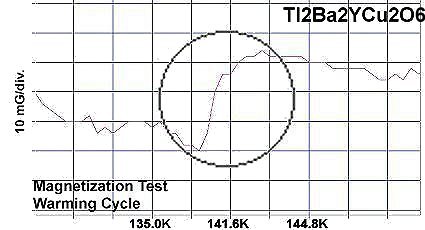
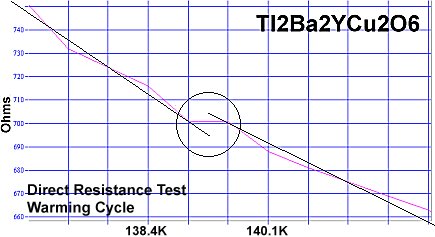 |
The chemical precursors were pelletized at 60,000 PSI. Those with tellurium-oxide were pre-sintered for 1 hour at 715C. If it contained bismuth-oxide, the pellet was then sintered for 3 days at 805C with no annealing. If the compound contained thallium-oxide, it was sintered at 860C for 36 hours and annealed for 10+ hours at 500C in flowing O2. Testing temperatures were determined using an Omega type "T" thermocouple and precision OP77 DC amplifier. The magnetometer employed twin Honeywell SS94A1F Hall-effect sensors with a tandem sensitivity of 50 mv/Gauss.
RESEARCH NOTE: The copper-oxides are strongly hygroscopic. All tests should be performed immediately after annealing.
RE-PUBLICATION NOTICE: Elsevier Publishing, dba Elsevier Science, as well as Morris Communications, both print and broadcast divisions, are specifically prohibited from re-publishing any part of this news story.
E. Joe Eck
© 2016 Superconductors.ORG
All rights reserved.
 BACK to "News" page at Superconductors.ORG
BACK to "News" page at Superconductors.ORG